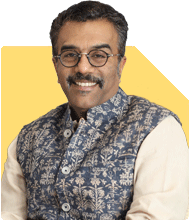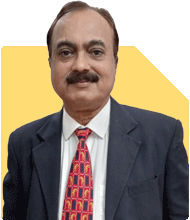Patrick Dsouza |1336 Answers |Ask -Follow
CAT, XAT, CMAT, CET Expert - Answered on May 20, 2024
Along with his wife, Rochelle, he trains students for competitive management entrance exams such as the Common Admission Test, the Xavier Aptitude Test, Common Management Admission Test and the Common Entrance Test.
They also train students for group discussions and interviews.
Patrick has scored in the 100 percentile six times in CAT. He achieved the first rank in XAT twice, in CET thrice and once in the Narsee Monjee Management Aptitude Test.
Apart from coaching students for MBA exams, Patrick and Rochelle have trained aspirants from the IIMs, the Jamnalal Bajaj Institute of Management Studies and the S P Jain Institute of Management Studies and Research for campus placements.
Patrick has been a panellist on the group discussion and panel interview rounds for some of the top management colleges in Mumbai.
He has graduated in mechanical engineering from the Motilal Nehru National Institute of Technology, Allahabad. He has completed his masters in management from the Jamnalal Bajaj Institute of Management Studies, Mumbai.... more

I have a doubt, my son is currently in mba after bsc in math, he always wanted to become a data analyst or data scientist. But he is not getting any jobs, regretting the decision of not opting for mca or msc in IT/cs. He saw a professor who studied btech/mtech and mba, in the same way , can he opt for msc in it after working for 2 years, since there is no age limit for studying and during mba, he also had a friend who is in mba at the age of 29, still he got a job after age gap. Please give us some hope. Do companies see like this person was not stable in education or they will see only the current skills and degree for the job, since DA and DS requires CS degree.
You may like to see similar questions and answers below
Chocko Valliappa |514 Answers |Ask -Follow
Tech Entrepreneur, Educationist - Answered on Feb 26, 2024
Pradeep Pramanik |241 Answers |Ask -Follow
Career And Placement Consultant - Answered on Aug 09, 2024
Nayagam P P |9515 Answers |Ask -Follow
Career Counsellor - Answered on Jul 28, 2025
Nayagam P P |9515 Answers |Ask -Follow
Career Counsellor - Answered on Jul 28, 2025
Nayagam P P |9515 Answers |Ask -Follow
Career Counsellor - Answered on Jul 28, 2025
Radheshyam Zanwar |5885 Answers |Ask -Follow
MHT-CET, IIT-JEE, NEET-UG Expert - Answered on Jul 28, 2025
Nayagam P P |9515 Answers |Ask -Follow
Career Counsellor - Answered on Jul 28, 2025
Nayagam P P |9515 Answers |Ask -Follow
Career Counsellor - Answered on Jul 28, 2025
Radheshyam Zanwar |5885 Answers |Ask -Follow
MHT-CET, IIT-JEE, NEET-UG Expert - Answered on Jul 28, 2025
Nayagam P P |9515 Answers |Ask -Follow
Career Counsellor - Answered on Jul 28, 2025
Nayagam P P |9515 Answers |Ask -Follow
Career Counsellor - Answered on Jul 28, 2025
Radheshyam Zanwar |5885 Answers |Ask -Follow
MHT-CET, IIT-JEE, NEET-UG Expert - Answered on Jul 28, 2025


















